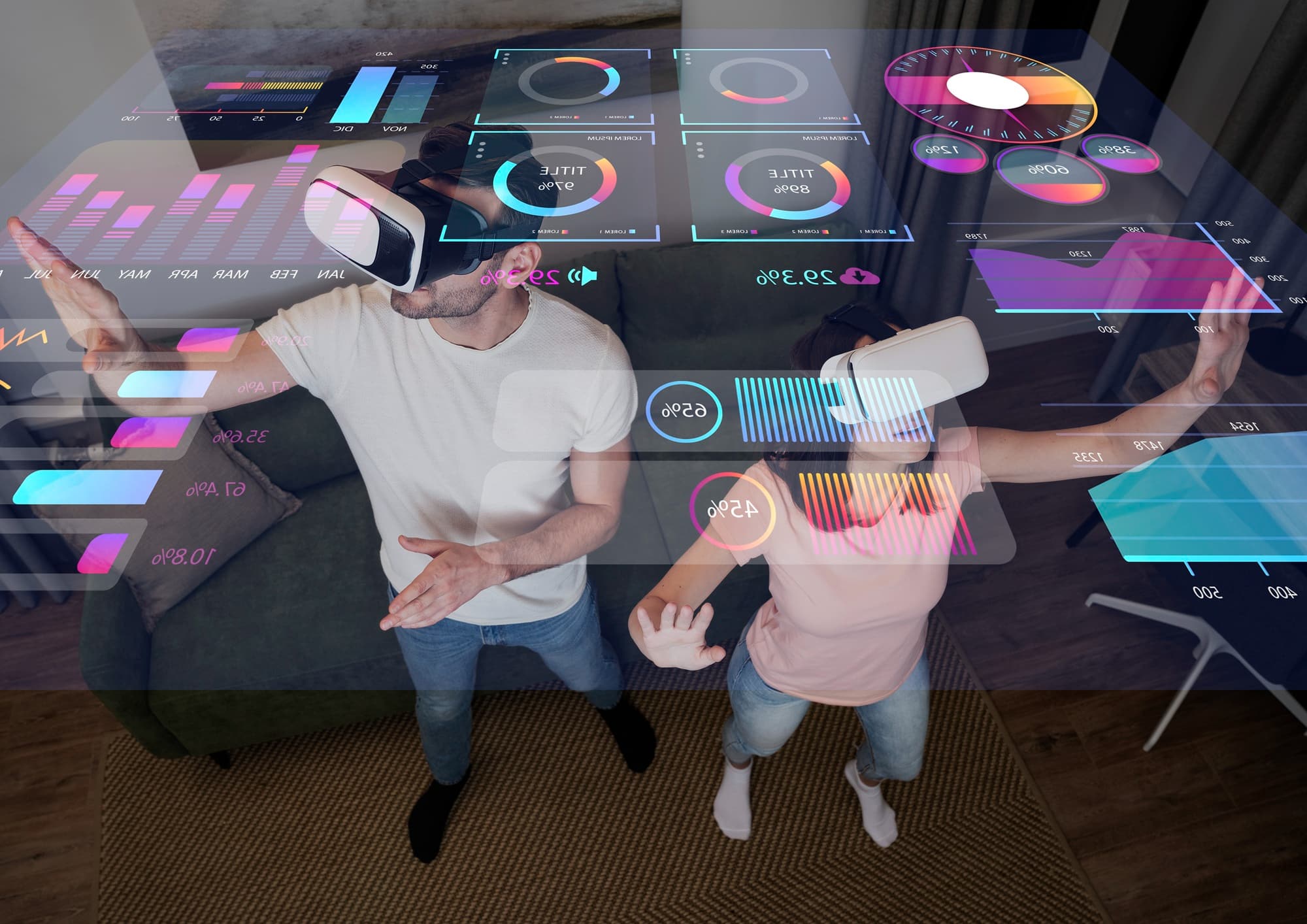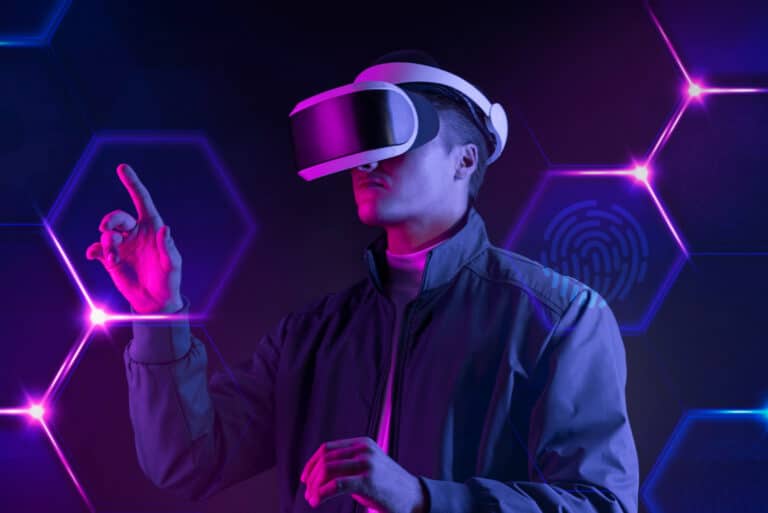AR (Augmented Reality) has become more common in recent years.
This article aims to explain the meaning and mechanism of augmented Reality and typical business applications of the technology.
Also discussed is the difference between VR and MR, which are often confused technologies, and the relationship with the much-discussed Metaverse.
It is for those in charge of companies considering integrating AR and Metaverse with their business, whose market is expected to expand, and those who wish to expand their knowledge of AR.
What is Augmented Reality? Augmented Reality Scope
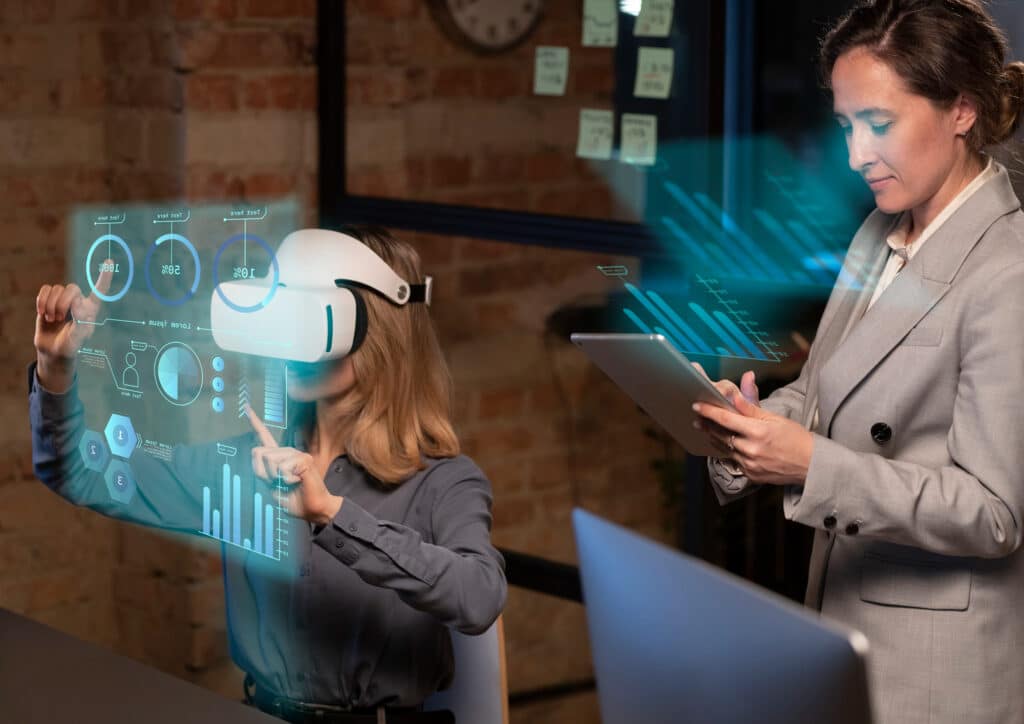
Augmented Reality is the addition of digital visual information to the real world. The term refers to technology that expands.
For example, suppose you take a picture of a specific place with your smartphone camera. In that case, CG content will be displayed in real-world scenery, and you will also be able to learn more about what you have shown—an example of general AR technology.
Smartphones can also be used to check the size and image of furniture users wish to purchase placed in a room using AR technology.
As a technology that supplements information based on the real world, AR has the advantage that anyone can intuitively recognize its information.
Many people may believe that AR is mostly used in games and entertainment.
However, it has become increasingly popular in a wide range of business fields in recent years.
In the future, AR technology will be integrated into virtual worlds on the Internet, such as Metaverse, which is becoming more popular worldwide.
History of Augmented Reality
There is a long history of AR dating back to the 1901 novel “The Master Key: An Electrical Fairy Tale” by Lyman Frank Baum.
AR is said to have begun by introducing “electronic displays” that overlay digital information in the real world.
Although the word AR has yet to be coined, the concept has existed for over 100 years.
AR research became systematized in the 1990s.
For example, in 1998, American football games were broadcast in AR.
In this AR system, video is used to visualize field lines that don’t exist on the actual field.
This system was the beginning, and now it provides information that cannot be visualized during sports, such as the offside line in soccer.
The AR game app “Pokemon GO” was released in 2016, becoming a global hit.
Through your smartphone, you can experience a surprising experience as if monsters appeared in real life.
There was a lot of interest in the game’s unusual gameplay of spotting monsters while walking while using your phone’s location information.
From the dawn of AR technology to the 2010s, when it developed dramatically, a variety of services have been created throughout the history of AR. That’s right.
How Augmented Reality works
AR can be divided into two types:
- Location-based
- Vision-based AR
Location-based AR
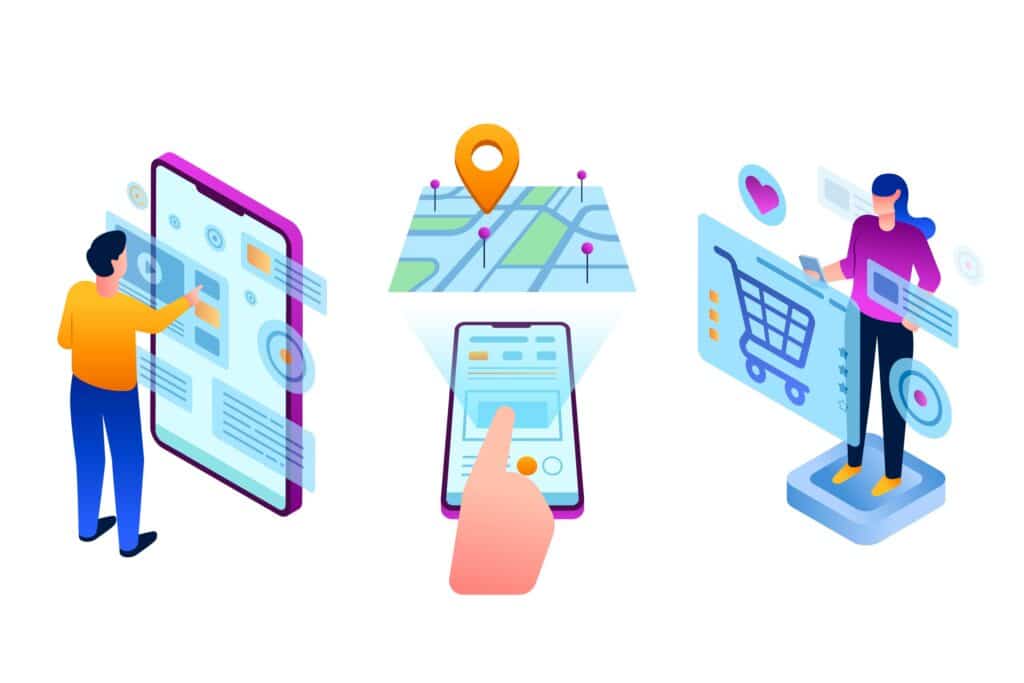
An AR system that uses location information to connect the real world and digital information is called location-based AR. We provide AR content linked to the user’s current location using GPS and site data from each sensor.
Location-based AR can be easily accessible from anywhere with a mobile signal.
Furthermore, GPS’s accuracy is limited, resulting in errors of several tens of centimeters.
Games such as “Pokemon GO” and navigation apps and tourist information use location-based AR.
A new technology called VPS (Visual Positioning System) has emerged in recent years.
In addition to its limited accuracy, GPS suffers from the weakness of large errors when affected by peripheral devices or the surrounding environment.
Meanwhile, VPS utilizes the device’s camera to gather information from buildings. By comparing the obtained information with data stored on the server, this technique identifies location information further.
Using this technique, VPS location information is less prone to errors than GPS, making it easier to obtain more accurate information.
It is still a developing technology with some issues, but is attracting attention as a potential replacement for GPS.
Vision-based AR
Vision-based AR identifies the user’s position and orientation by connecting image information captured by the device’s camera with digital information.
This method provides an AR experience with high location accuracy compared to location-based AR. Based on spatial recognition, vision-based AR can be divided into two categories.
Marker-type vision-based AR
In marker-type vision-based AR, specific markers are recognized in real-world images, and associated information is collected. Overlaying objects is a method of displaying them.
Even though this method requires markers to be prepared in advance, it is technically simple and can be displayed anywhere.
Marker less vision-based AR
It is not necessary to use specific markers with marker-less vision-based AR.
In this method, a camera captures images of the real world and recognizes its characteristics, then overlays virtual objects over them.
Thus, it is highly convenient since information can be displayed more naturally.
Advanced technology is needed to recognize the surrounding environment and objects; advance-roving recognition accuracy is a challenge.
AR devices required
Smartphone/tablet
These gadgets have cameras, speed-increase sensors, gyroscopes, and elements essential for AR encounters.
Typically, a dedicated AR app is required to experience AR. The help “WebAR” lets you encounter it from an internet browser without requiring a committed application.
For newbies, this assistance is the simplest method for encountering AR.
Smart glasses
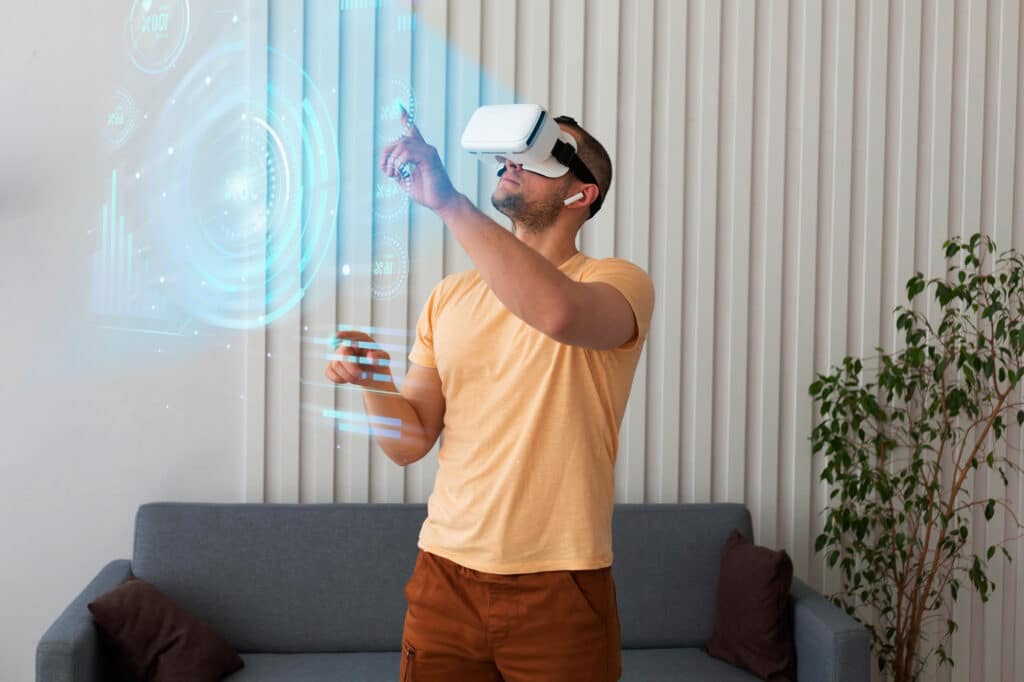
CG content can be displayed on the lens display of smart glasses, which are wearable glasses-like devices. Hands-free AR provides a more intuitive and immersive experience than smartphones and tablets.
Consumer smart glasses such as the “Nreal Air” developed by Nreal in China are typical examples.
Until now, most smart glasses have been expensive and aimed at corporations.
As a result of the device-connected nature of “Nreal Air,” which was released in 2020, smart glasses became more accessible to consumers.
Difference between Augmented Reality and virtual reality/mixed reality
Virtual Reality
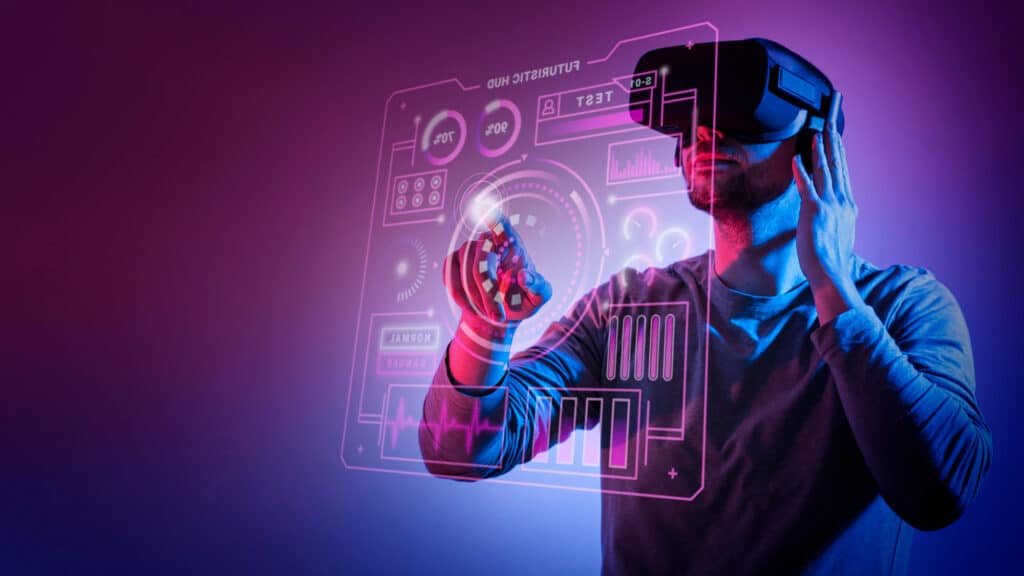
VR goggles, or head-mounted displays, are examples of technology that enables users to experience a virtual space as if it were real. “Virtual reality” is another name for VR.
Computer-generated Reality covers the whole field of view, while increased Reality overlays data over the genuine region.
Mixed Reality
Mixed Reality is a technology that fuses real-world and virtual information to enable complex spatial perception. Mixed Reality is also known as MR.
Despite its similarity to AR, MR recognizes the three-dimensional shape of the real world and allows you to place virtual objects on the ground, desk, etc., or touch them.
In recent years, VR and AR have blurred their boundaries with the emergence of services that combine them both, and the number of benefits that cross borders has increased, leading to the creation of a new generic term: XR (cross Reality).
VR and MR, which provide a high degree of immersion and Reality, require dedicated devices.
In addition, AR can be experienced on a smartphone alone, so it can be considered a technology that can provide users with XR experiences easily.
Relationship between AR and Metaverse
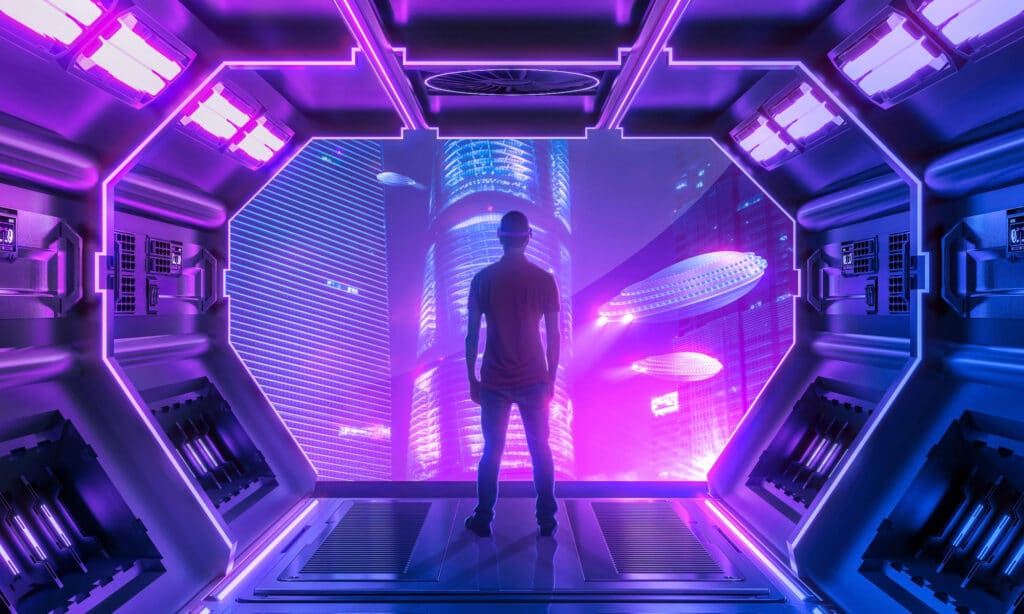
Users interact freely with each other by operating avatars in the Metaverse, a three-dimensional “virtual world.”
Even though AR and the Metaverse are still in the development stages, they are predicted to work closely together in the future.
Some platforms are considering connecting the real world to the Metaverse world. For example, you can see people before you in the real world. When an avatar appears, and you have a conversation, or when a clerk at a real store is also working at a virtual store.
For example, the following two are representative.
- You will see the signboard displayed in virtual space in the real city declared in the same way if you wear AR glasses, and if you rewrite it digitally, you will see it synchronized in real-time.
- Wearing AR glasses in a real store allows you to see store staff avatars in a virtual space and receive customer service.
The Metaverse proposed by Microsoft, Meta, and others connects this real space with VR and AR.
Reference Article : What is a Defining Feature of the Metaverse? How to Start a Business in the Metaverse
Advantages of AR
Convenient services
The use of AR makes our lives easier in many ways.
Services that display translated text when you hold your camera over text in the foreign language you wish to translate include navigation that superimposes the direction of your destination above a real-world landscape.
You may have experienced Google’s “AR Navi” as a representative app.
Getting new customers
It is now possible to experience things like product sizes in a store using AR.
When it comes to clothes, for example, it is easier to tell the exact size and image of the item being worn just by looking at the product image and description.
By superimposing the user’s image with a CG reproduction of the clothes, AR can give the feeling of trying on the clothes.
As a result of using AR in this way, it is now possible to provide experiences that were previously only possible in physical stores online.
Consequently, we expect to attract new customers from a customer base with whom we had no previous contact, leading to expanded sales channels.
Enhances operational efficiency
AR can reduce costs and eliminate human resource shortages for companies.
For example, employees in the manufacturing industry can view information such as manuals in their field of vision while working, enhancing education and simulations.
Having the ability to share what you see in real-time with people around you will also lead to fewer misunderstandings.
Targets in large numbers
AR can be experienced on a smartphone, so it is a more mature business model than VR/MR.
However, VR/MR needs dedicated devices like head-mounted displays (VR goggles) to become widely adopted, so there are still high hurdles to overcome.
AR, which has already resolved this issue, is expected to expand its business to a wide range of targets since it offers a wide range of services that improve consumer convenience.
Augmented reality apps and services
Pokemon GO
Niantic has developed this free-to-play smartphone game application.
Pokemon GO uses location information to move to various locations and catch Pokémon that appear in the real world using augmented Reality.
Additionally, items collected while moving can be used as training, and users can engage in monster battles.
Among mobile games, it has been certified by the Guinness Book of World Records as the most downloaded app in its first month.
Snapchat
Snapchat uses AR technology to change your appearance and face using AR filters.
Various filters can make a man look like a woman or anime-like.
Landscapes can also be processed, and you can even apply filters that make it look like a rainbow is appearing on a landscape that doesn’t have one.
Younger generations often use it as a photo editing app and social network because it includes social elements.
IKEA Kreativ
You can use the IKEA Kreativ app to 3D scan your room and replace existing furniture with IKEA furniture to check the size and design.
You can prevent mismatches and ensure the furniture will fit in your real room by placing virtual IKEA furniture there.
Seikurabe
Seikurabe is an AR app for tracking child growth. The child’s height and development are also measured while the photo is taken.
Through AR, you can interact with your past self on the screen, a new service only possible through AR.
AR Aerial Doodle
The DS brand also holds an event called “AR Aerial Doodle Experience Session” for parents and children.
You can see the drawings floating in the sky by importing them as data and viewing them with a dedicated smartphone app.
This event aims to introduce children to augmented Reality in a fun way and is always crowded with participants.
Uses of AR in business
Advertising field
Videos and music that can’t be displayed on advertising pages can be provided via AR.
Using a published photo as a marker, the system displays digital data when your device is over it.
The service uses videos to supplement information and meet the needs of readers who want to learn more about the content.
Using AR, advertisements that are difficult to convey through text alone can be enhanced with CG, creating new active value.
Medical field
During surgery, AR technology is being applied to manuals and medical records.
An example would be to visualize the organ status of a patient during vascular surgery and support the process.
Additionally, you can share CT scan data and communicate with multiple doctors about the characteristics of lesions that should be noted.
AR technology also treats patients remotely, diagnoses images, and trains doctors.
EC field
Virtual makeup and virtual fitting services are compatible with AR technology in the EC field.
Virtual try-on allows you to efficiently try on many products from the comfort of your own home. The option to try on items even if they are not in stock will reduce customers’ missed orders.
The virtual try-on app “Kitemiru” released by Data Grid is an example of business use.
The Kitemiru app allows users to upload a photo taken with their smartphone, and the AI will immediately generate and display an image of the product being tested.
This app is also useful for small children who have difficulty trying on clothes since it allows them to purchase items without trying them on.
Tourism field
Tourism is actively utilizing AR technology to disseminate information about tourist destinations. AR can be used to distribute tourist information, event information, etc., from tourist destination guidebooks.
Using AR to promote tourism will further pique and increase users’ interest.
Regarding business use, we would like to introduce the “Atami vs. Godzilla 4” project sponsored by Little Monsters Co., Ltd.
A life-sized AR Godzilla will appear at Atami Castle if you launch a special app and scan the castle spatially.
Driving support
AR is a technology that projects meter and navigation information onto a car’s windshield.
Regarding safe driving support, the Mercedes AR guidance system is an effective AR technology.
The scenery in front of the vehicle is displayed on the navigation screen, and arrows are enlarged using CG to indicate the way. This system lets you decide which road to take instantly and intuitively.
Summary
As smartphones spread, AR is already being widely used in business.
Using AR to make virtual experiences more familiar to consumers is the key.
By using AR, people can experience services that are normally only accessible through physical stores from the comfort of their own homes.
A demonstration experiment has also begun aimed at collaborating with a technology called “digital twin,” which aims to virtualize the real world completely.
Technology innovation and trends in AR will play an important role in future business strategies. The Metaverse, closely related to augmented Reality, is expected to create a new economic zone.
In the future, we can experience experiences that connect the real and virtual worlds like never before.
By integrating advanced technologies like AR and Metaverse into your business early, you can expect high PR effects and improved corporate value. Small and medium-sized enterprises will also need to use these advanced technologies in their marketing campaigns in the future.
Small and medium-sized businesses can now easily create specialized Metaverses, even though it is sometimes thought that there are high hurdles to introducing Metaverse.

